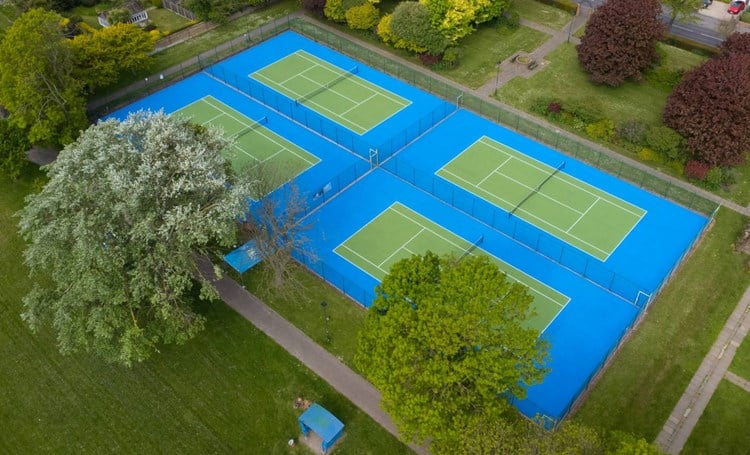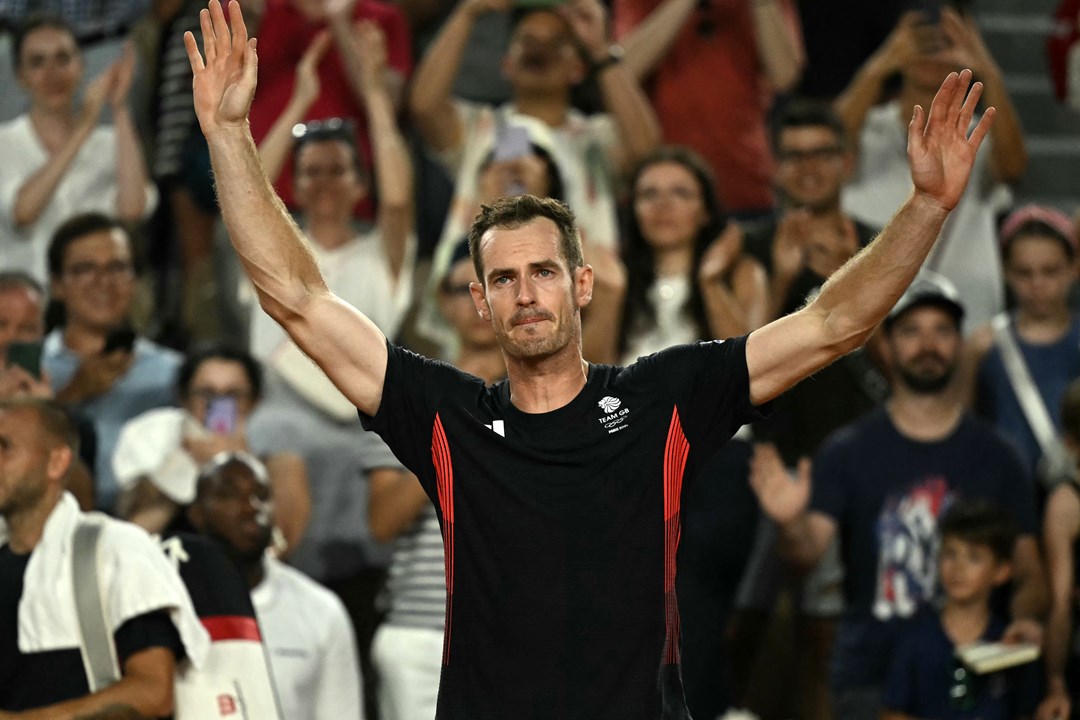
Andy Murray’s career timeline: Grand Slams, Olympic Gold medals, topping the world rankings and everything in between
• 8 minute read
1 August 2024 – the day that Andy Murray officially called time on an incredible tennis career that has seen him become one of Britain’s greatest sporting icons.
From Grand Slam titles to broken records, here’s a look back at the timeline of Murray’s incredible career as one of the greatest tennis players of all time.
Andy Murray’s junior career
It was clear from an early age that Murray was destined for the very top of the game. While Murray also played a lot of football in his junior days, it was tennis that proved his ultimate love.
Coached by Mum Judy Murray and later by his future Davis Cup Captain Leon Smith in his early years on court, Murray made a name for himself after winning the 12U and 14U events at the prestigious Orange Bowl in Florida.
Speaking to The Guardian in 2009, Smith said: “I could tell straight away that Andy was a hugely talented kid and as I started to work with him more, I realised how competitive he was: he loved winning and hated losing. There was a lot of pressure on Andy even at that age.”
He went on to finish as runner-up at Les Petit As in 2001, where he beat Novak Djokovic for the first time, before securing the European Winter Cup for the Great Britain 14U team.
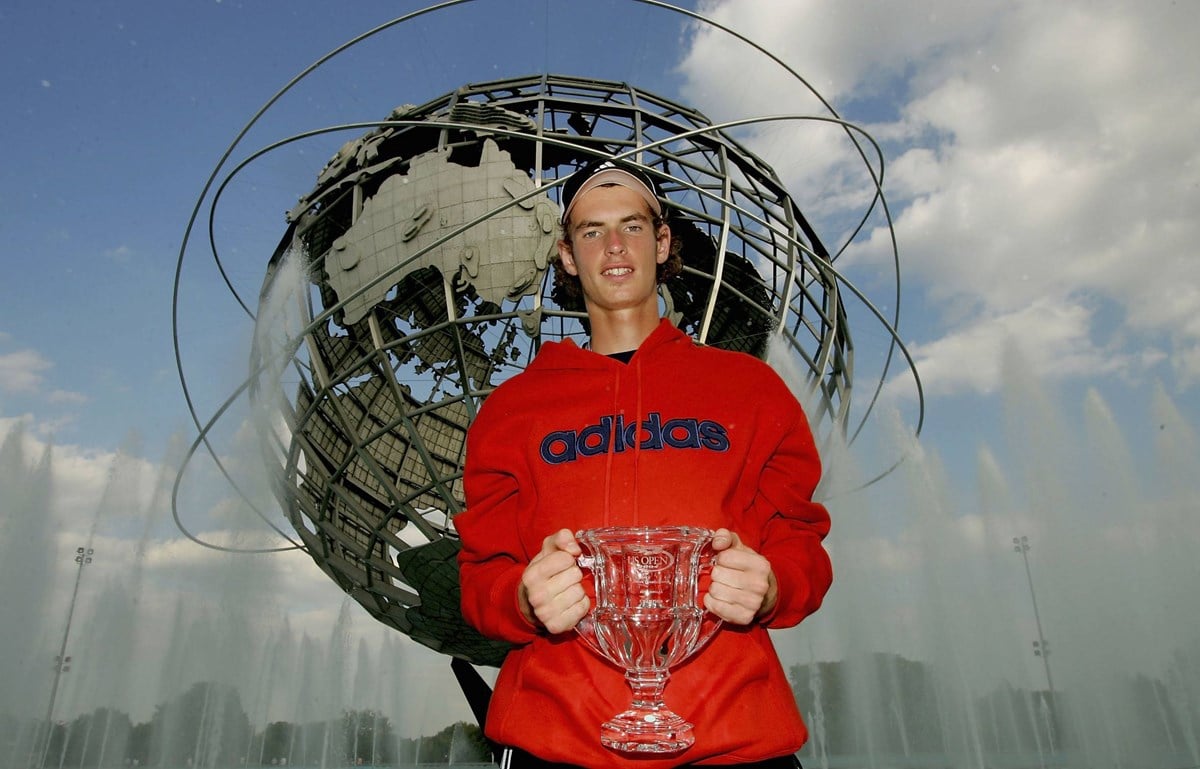
Balancing his time in later years between the junior Grand Slams and starting out life on the professional tours, Murray won the Junior US Open title in 2004. The British teenager defeated Sergei Stakhovsky 6-4, 6-2 to become the first British player to win the trophy to take him to junior world No.2. It wouldn’t be the last time he would find himself amongst the champions at Flushing Meadows, but more on that later…
In the other major tournaments, Murray finished his junior career having made the singles semi-final Roland Garros and doubles quarter-final at Wimbledon.
As the results kept coming and Murray continued to prove himself as one of the best junior players in the world it was time for the young Briton to take his talents to the pro-level.
2005-2006: From tour debut to British No.1
Having won five ITF Futures events during his junior days over two years prior, Murray officially turned pro in 2005.
It was in March that year that Murray made his Davis Cup debut for Great Britain, featuring in doubles win with David Sherwood to help the Brits to victory over Israel in the World Group Qualifiers.
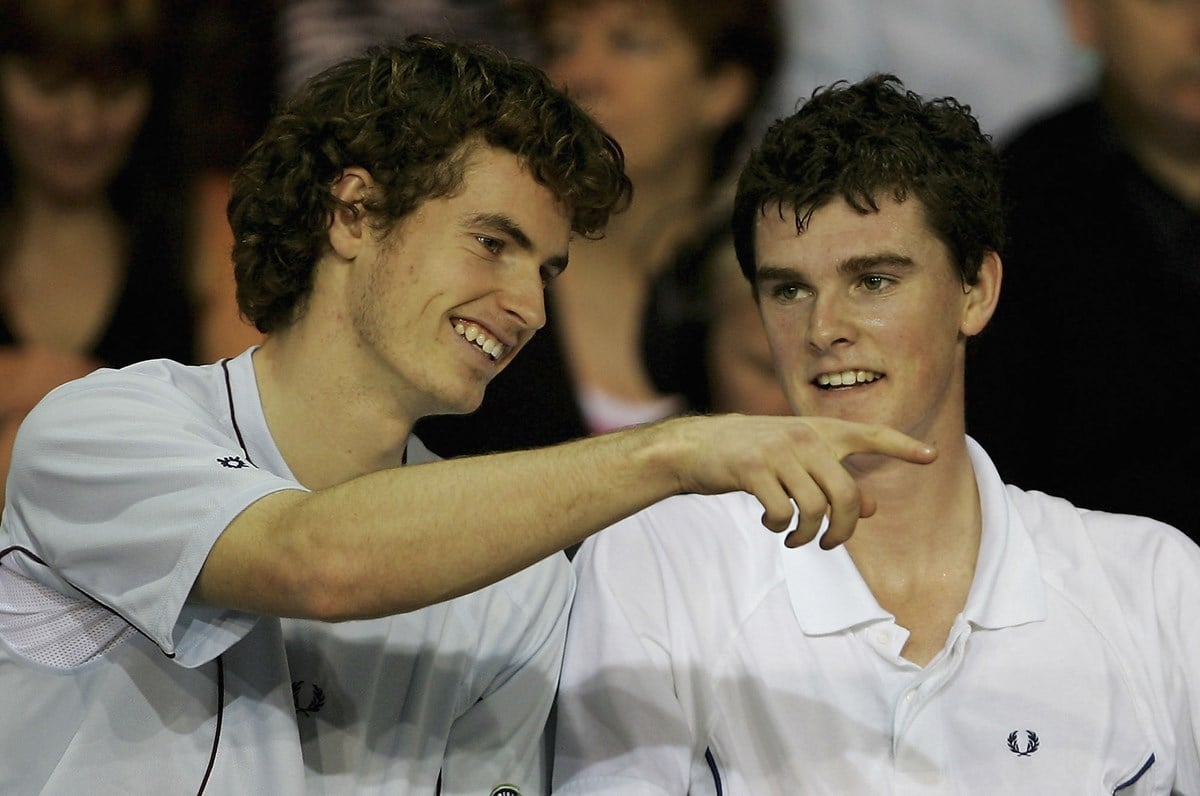
Murray became the youngest Briton to ever compete at the Davis Cup and was given his first singles call-up later in the year where he would go up against Stan Wawrinka for the first time.
Just a couple of months after his ATP debut in Barcelona, Murray went on to claim his first tour-level win at the Queen’s Championships in London – announcing himself on the world stage.
In what would later become his most successful event, Murray beat Satiago Ventura in the first round, before a statement win against world No.30 Taylor Dent in the second round.
He's had this massive hip issue and what he is doing is inspirational. I hope Andy, like Rafa [Nadal] and Novak [Djokovic], can keep playing forever, like a fan. The tour is better with them.
The third round saw the 18-year-old put on a show against Sweden’s Thomas Johansson before narrowly losing out 7-6(1), 6-7(5), 7-5 – but it was clear that the Murray-era of British tennis was ready to ignite.
The British teen made the most of his Wimbledon wild card just weeks later as he fought his way into the third round, knocking out world No.13 Radek Stephanek before pushing 2002 runner-up David Nalbandian to five sets.
In the months that followed, Murray won two ATP Challenger titles in Aptos and Binghamton, made his debut at the US Open – claiming his first five-set win against Andrei Pavel – and reached his maiden ATP final in Bangkok, where he faced Roger Federer for the first time.
2006 saw Murray establish himself amongst the best players on tour at just the young age of 19. Having previously been working with coach Mark Petchey, the LTA brought in former world No.4 Brad Gilbert to team up with Murray and he quickly found success with his first ATP title in February – defeating world No.3 Andy Roddick and Lleyton Hewitt en route to the San Jose title.
His maiden tour-level trophy saw him rise to world No.42 and become British No.1 for the first time.
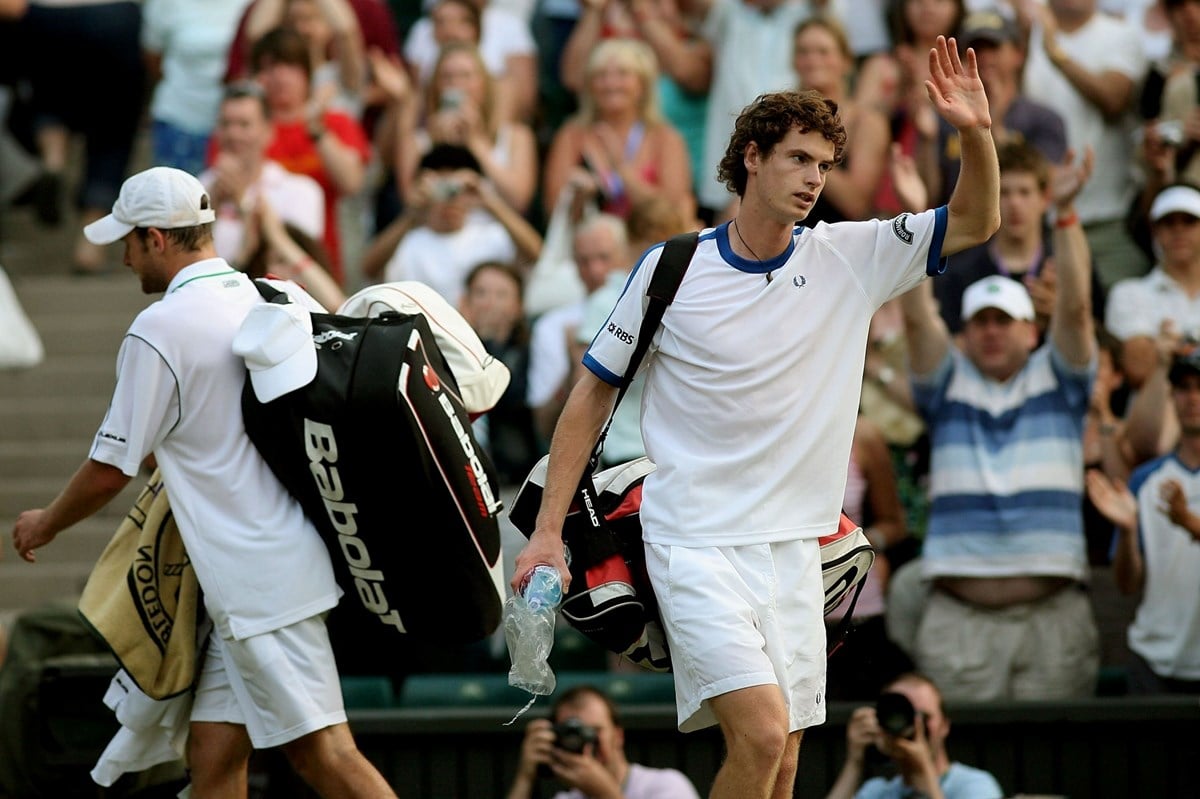
Later that season, Murray arrived at Wimbledon with more eyes and expectations on him than ever before, and he rose to the challenge. He defeated Nicolas Massu and Julien Benneteau before conquering Roddick on the biggest stage 7-6(4), 6-4, 6-4 to reach the fourth round for the first time.
"I think that's got to be my best win," Murray said after a landmark win, "beating a two-time Wimbledon finalist, former world No.1 and Grand Slam champion on Centre Court in three sets.”
He lost to Marcos Baghdatis in the fourth round but from there his performances only continued to improve.
A semi-final in Newport and final in Washington precluded his first ATP Masters semi in Toronto before also going on to reach the quarter-final in Cincinnati – beating countryman Tim Henman in both tournaments.
His impressive form on the hard courts saw him go on to make the US Open fourth round – a run that led him to a five-set victory over world No.11 Fernando Gonzalez, 6-3, 3-6, 2-6, 6-3, 6-2.
Murray finished his second full year on tour with 40 wins and ranked No.19.
2007-2011: Grand Slam Finals and reaching world No.2
The years that followed saw Murray cement his place as a regular feature inside the world’s top 10 and later, top five.
In 2007, the Briton won two titles, retaining his San Jose crown and then lifting the trophy in St Petersburg later in the year. He also reached finals in Doha and Metz as well as semis at Indian Wells and Miami – losing to Djokovic on both occasions. The Serbian would become one of Murray’s greatest rivals over the many years to come.
It was during this year that Murray also suffered a potential career-threatening injury to his right wrist in Hamburg, which forced him to miss five months of tournaments - including the French Open and Wimbledon.
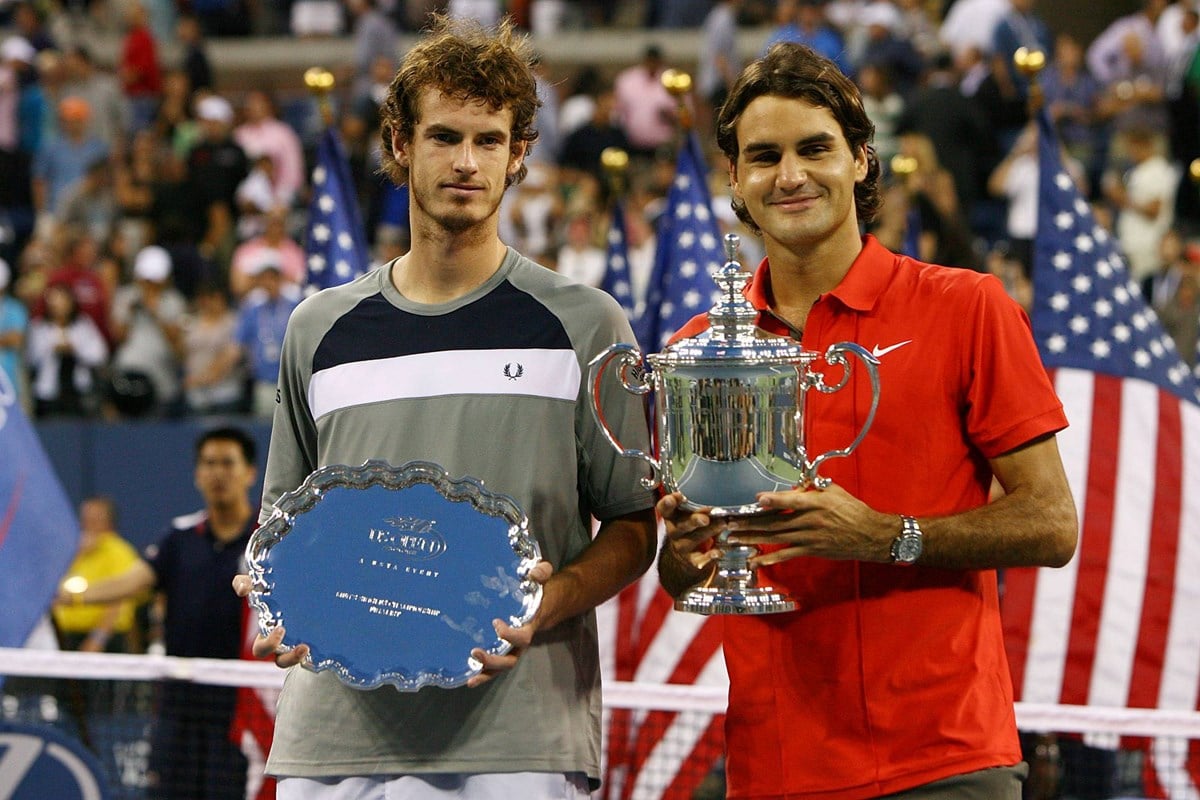
2008 turned out to be one of Murray’s most successful of his career with five titles.
His impressive haul included his maiden ATP Masters trophy in Cincinnati thanks to his first final win over Djokovic. This was followed by his second 1000-level title at Madrid later in the season, where he beat Marin Cilic, Gael Monfils, Federer and Gilles Simon.
Despite all this great success, arguably his best result came at the US Open that year, where Murray reached his first Grand Slam final.
In terms of level of tennis, in terms of mentality winning spirit - Andy was the only one at the same level of myself, Roger and Novak.
In an incredible run, Murray knocked out three current and future major title winners in Wawrinka, Juan Martin del Potro and world No.1 and reigning French Open and Wimbledon champion, Rafael Nadal, before losing to Federer 6-2, 7-5, 6-2 in the final. It was the Swiss maestro’s fifth successive title at Flushing Meadows.
“I had a great tournament but I came up against, in my opinion, the best player ever to play the game,” Murray said following the 2008 US Open final. “I had got the better of him the last two times we played, and he definitely set the record straight, so congratulations to him.” It would only be a few years until Murray got another shot at the crown…
Fast forward to 2009 and the titles just kept coming for Murray. The British No.1 added six more to his tally – the standout of which were two Masters trophies in Miami and Montreal, and of course, at the Queens Club.
Murray arrived at Queen’s as the top seed for the first time and made good on it – winning the tournament without dropping a set. In the final, he beat American James Blake 7-5, 6-4 to etch his name in the history books as the first British champion at Queen’s since 1938.
Murray's finals record at The Queen's Club
- 2009 - beat James Blake (USA) 7-5, 6-4
- 2011 - beat Jo-Wilfried Tsonga (FRA) 3-6, 7-6(2), 6-4
- 2013 - beat Marin Čilić (CRO) 5-7, 7-5, 6-3
- 2015 - beat Kevin Anderson (RSA) 6-3, 6-4
- 2016 - beat Milos Raonic (CAN) 6-7(5), 6-4, 6-3
- 2019 (with Feliciano Lopez) - beat Joe Salisbury (GBR) & Rajeev Ram (USA) 7-6(6), 5-7, 10-5
That year, Murray also had his best Wimbledon run to date – featuring amongst the final four for the first time, before narrowly losing to Roddick 6-4, 4-6, 7-6(7), 7-6(5).
Murray’s season saw him qualify for the ATP Finals for the first time as well, where he recorded wins over Del Potro and Verdasco.
Entering 2010, Murray had never progressed past the fourth round at the Australian Open, but that was all about to change. Having finished runner-up at the Hopman Cup with Laura Robson only weeks before, the Briton kicked on with a run to his second Grand Slam final in Melbourne.
Murray took out Nadal and Cilic in the quarter and semi-finals, before once again losing out to Federer 6-3, 6-4, 7-6(11) at the final hurdle.
Form fluctuated for Murray in the coming months, but he saved his best for the big occasion as he replicated his semi-final performance from the previous year at Wimbledon. World No.1 and 2008 champion Nadal proved too strong for Murray, claiming a straight sets win over the Brit.
With the bit between his teeth, Murray closed out the season by winning Masters titles in Toronto and Shanghai and made the semi-finals of the ATP Finals.
In 2011 Murray had his most successful season in Grand Slams to date, making the semi-finals or better in Australia, France, Great Britain and USA.
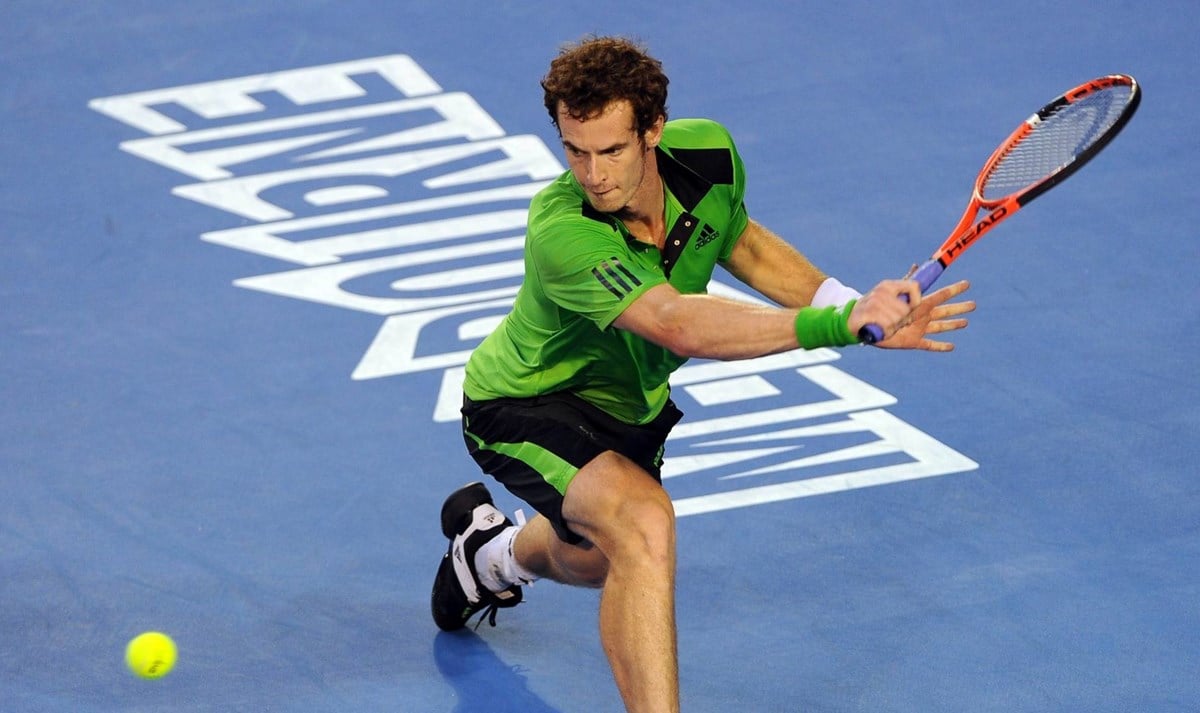
He made back-to-back Australian Open finals with another brilliant run Down Under, but the fifth seed lost out to Djokovic 6-4, 6-2, 6-3 as the search for his maiden Slam continued.
Despite going out in the final four of the other three majors – including his best result at Roland Garros – losing to Nadal in all three semi-finals.
Murray still won five titles throughout the season. He added another two Masters crowns in Cincinnati and Shanghai with victories over Djokovic and David Ferrer, as well as a second Queen’s Club trophy.
Returning to London, the Brit came back from a set down against Jo-Wilfried Tsonga to win 3-6, 7-6(2), 6-4 and once again lift the title in front of the home crowd.
He finished the season ranked as world No.4 for a fourth successive year – but there were plenty of new milestones ahead in 2012.
It was on the 31 December that year that Murray also announced that he would be appointing former world No.1 Ivan Lendl as his full-time coach – a partnership that would see some of the Brit’s finest moments across three successful stints together.
2012: US Open title and Olympic gold in London
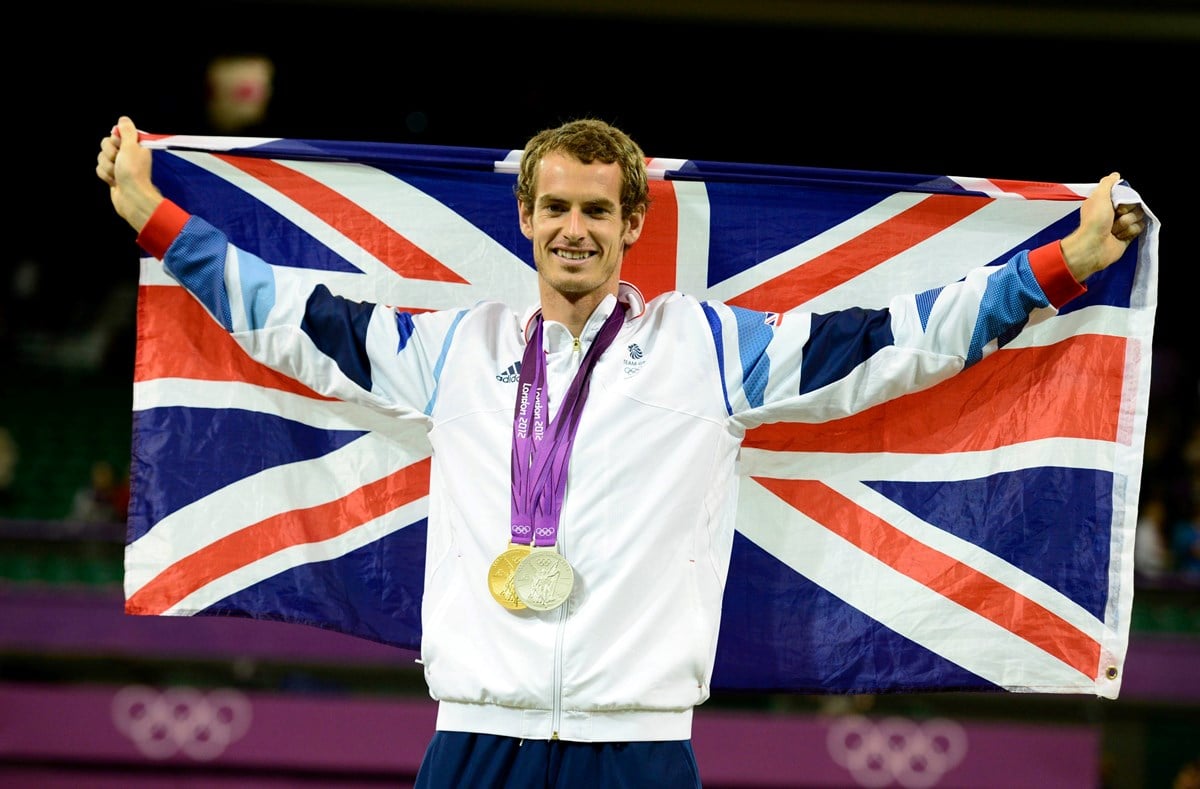
The 2012 season was a breakthrough for many reasons. While compared to previous seasons, he only won three titles, two were the most significant of his career to date – the Olympic gold medal and his first senior Grand Slam at the 2012 US Open, where he defeated Djokovic in five sets.
There was a huge amount of pressure on Murray heading to the London 2012 Olympic Games. Only a month earlier, he had become the first British men’s player to reach the singles final at Wimbledon for 74 years.
Murray’s groundbreaking run at his home Slam saw him defeat the likes of Cilic, Ferrer and Tsonga to make his first ever final at SW19. Standing in the way of history however was none other than Federer, who at this point had won six of the last nine Wimbledon titles.
Unfortunately for Murray, it would be magic number seven for the Swiss star, taking the championship 6–4, 5–7, 3–6, 4–6.
Fighting back the tears in a memorable speech on Centre Court, Murray said: “I’m getting closer. If I wasn’t emotional, I guess I’m probably in the wrong sport.
While his wait for the first Grand Slam would have to wait (not for long…), Murray did have his chance at revenge on the same Centre Court at the All England Club.
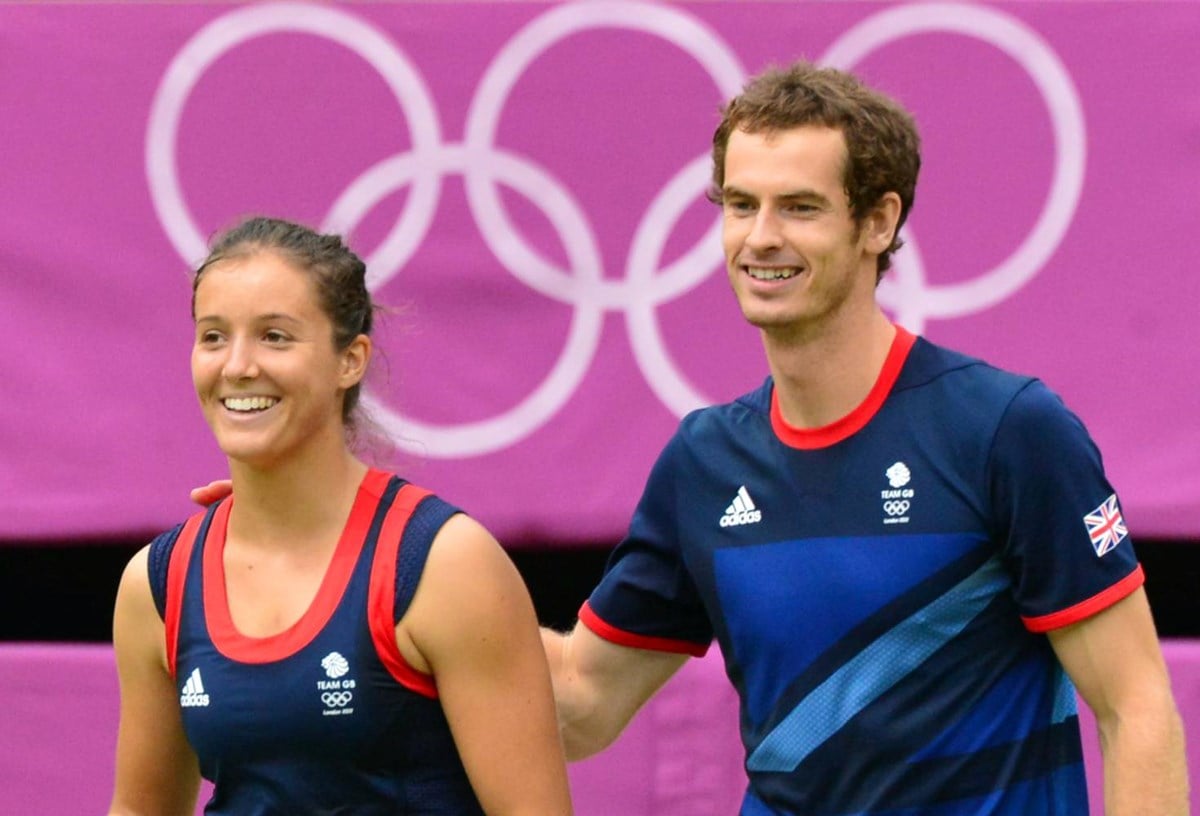
Playing as the home favourite at the London Games, Murray produced one of his best weeks of tennis and one of the most significant of his career.
He breezed past Wawrinka, Jarkko Nieminen, Baghdatis, Nicolas Almagro and Djokovic, all to the loss of just one set in the early rounds to tee up a rematch against Federer.
By this point Federer had beaten Murray in finals at the US Open, Australian Open and Wimbledon, but this time, the glory would go to the Briton.
Murray hammered the world No.1 6-2, 6-1, 6-4 in just under two hours to write his name in history as an Olympic gold medallist – one of the few achievements in the game that Djokovic is still yet to complete.
He became the first British man to win an Olympic gold in tennis since Major Ritchie in 1908.
“This is the way to come back from the Wimbledon final – I’ll never forget it,” he said. “It’s the biggest win of my life.”
Not only that, but partnering with fellow Brit Robson, Murray also claimed a silver medal in the mixed doubles event.
His success in London saw Murray’s confidence reach an all-time high – setting him up perfectly for another crack at the title in New York.
Murray showed nerves of steel to come through three four-set battles with Feliciano Lopez, Cilic and Berdych to make his second career US Open final and the fifth Grand Slam final overall.
In the final, Murray got off to the perfect start, edging two close opening sets against Djokovic to move just one away from the trophy. But the Serbian – as ever – came back fighting and managed to bring the match back level to force a deciding set.
With the world watching and the momentum seemingly in Djokovic’s favour – Murray rose one final time and clinched that elusive first Grand Slam title in a 7-6(10), 7-5, 2-6, 3-6, 6-2 victory.

10 years on, in an interview in 2022, Murray acknowledged why this was such a significant point in his career.
“That was a huge moment for me,” said the British star. “I’d been put under a lot of pressure to try and achieve that. A lot of what I’d achieved in my career up to that point felt, to me anyway, kind of irrelevant because of the questions I’d continued to get asked about winning Slams.
“Am I good enough? Am I fit enough? Am I mentally strong enough? Lots and lots of questions over a period of time. It was nice to finally be able to move on from that.”
Murray finished the year as the World Breakthrough of the Year at the prestigious Laureus World Sports Awards and was awarded an OBE in the New Year Honours for his services to tennis.
Later in 2017, Murray would become the youngest person to receive a knighthood in the UK at just the age of 29, which he then received from Prince Charles in 2019 – becoming Sir Andy Murray.
His legacy is everything. He is the epitome of tennis in his passion, his love for the game, it's like no other. You don't see that often on tour and what he's been able to accomplish.
2013: Making history at Wimbledon
With all the success of the previous year, it is 2013 that will perhaps stand longest in the memory of British tennis fans. Everyone remembers where they were on Sunday 7 July, but more on that later.
The start of the season saw Murray claim the Brisbane International title before moving on to a third Australian Open final after beating Federer 6-4, 6-7(5), 6-3, 6-7(2), 6-2 in one of the best and most revered wins of his career.
But once again, world No.1 Djokovic would prove a step too far in the final, with the Serbian coming out as the eventual champion with a 6-7(2), 7-6(3), 6-3, 6-2 victory.
Murray’s first title of the season came at the Miami Open, where he won his second and final trophy in Florida in a tough 2-6, 6-4, 7-6(1) win over Ferrer is difficult conditions.
Having missed Roland Garros with a back injury, it was on to Murray’s favourite time of year – grass court season.
With expectations high after a Wimbledon final and the Olympic gold, Murray didn’t let the pressure show. He became the first British player to win three titles at the Queen’s Club since Arthur Lowe in 1925 after defeating Croatia’s Cilic in the final 5-7, 7-5, 6-3.
Murray donated a significant portion of his prize money to the Rally Against Cancer charity for the Royal Marsden hospital.
After his singes final win, he later returned to court to play a pro-celebrity match to help raise further funds in support of friend and doubles player Ross Hutchins, who had been receiving treatment there for Hodgkin’s Lymphoma.
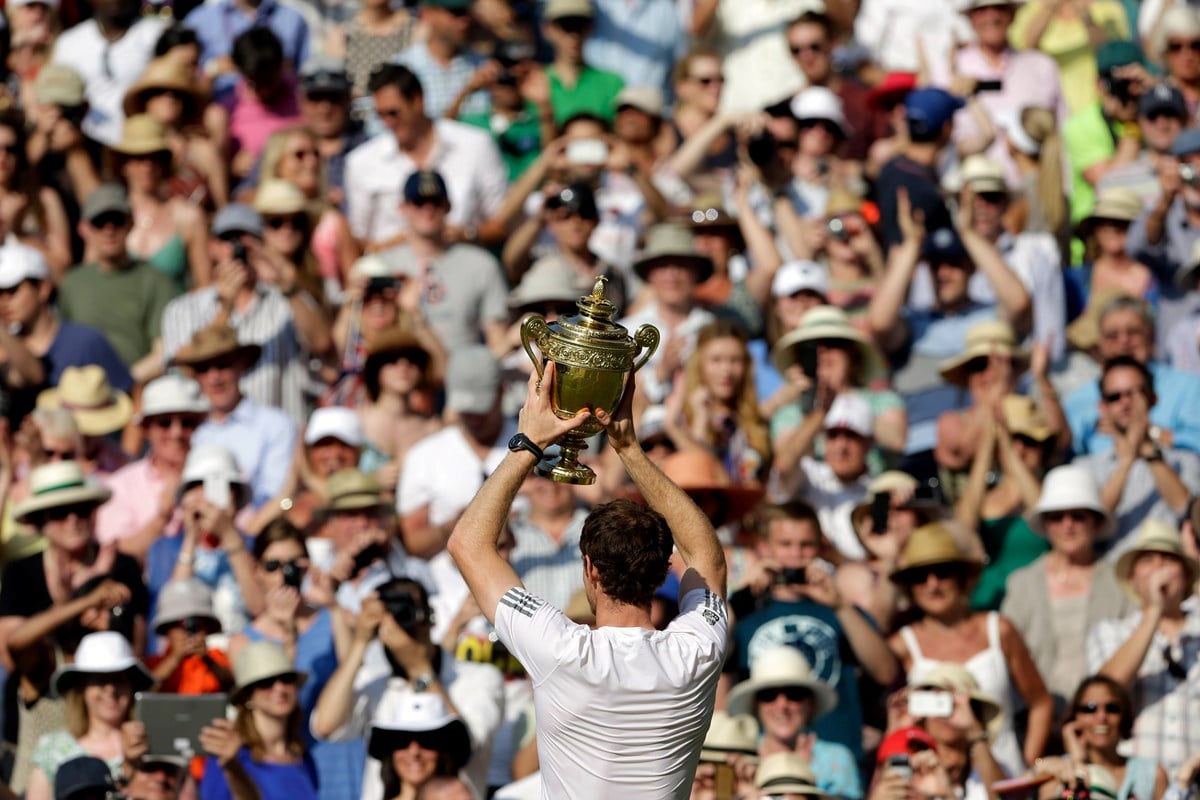
It was then on to the main event, Wimbledon. Spurred on by his runner-up finish the year before, Murray proved unstoppable at SW19.
His early round win over Benjamin Becker marked his 107th Grand Slam victory – surpassing the great Fred Perry as the British player with the most Grand Slam victories of all-time.
The world No.2 put in another memorable performance to come from two sets down to beat Fernando Verdasco in the quarter-finals before eventually setting up his fourth major final with Djokovic.
With the experience of winning on Centre Court at the Olympics in 2012, Murray took down the top seed 6-4, 7-5, 6-4, etching his name in the history books as the first British men’s champion for 77 years.
In doing so, Murray also became only the seventh man in the Open Era to complete the Queen’s/Wimbledon double having gone the grass court season undefeated.
After the final ball Murray sunk to his knees in celebration and the realisation of a dream he’d been carrying his whole life.
“Last year was one of the toughest moments of my career, so to manage to win the tournament today...,” he said through tears of joy.
"I understand how much everyone wanted to see a British winner at Wimbledon and I hope everyone enjoyed it."
British tennis legend and Broadcaster Sue Barker’s reaction told the whole story.
“Tennis is in my heart and blood, and I’d never thought I’d see that,” she said. “It was without a doubt the greatest sporting event I have witnessed.”
His landmark achievement saw him named BBC Sports Personality of the Year for the first time in his career.
Murray would go on to win the award twice more throughout his career in 2015 and 2016 and has still won it more times than any other British athlete in the history of the award.
When I think about him, when I think about the legacy he leaves, he's done a lot for British tennis. He's affected every tennis kid worldwide.
2014-2015: Leading Great Britain to Davis Cup victory
Following a quarter-final run at the Australian Open in 2014, Murray turned his attention to the Davis Cup where he won both his rubbers against the USA to book Great Britain’s spot in the World Group quarter-final for the first time since 1986, where they eventually lost to Italy.
Throughout the rest of the season, the Brit won three titles in Shenzhen, Vienna and Valencia, as well as the semi-finals at Roland Garros, a seventh consecutive quarter-final at Wimbledon and once again qualified for the ATP Finals in London.
Murray parted ways with long-standing coach Lendl, who had been a big part of his journey in winning his first two majors and the Olympic gold.
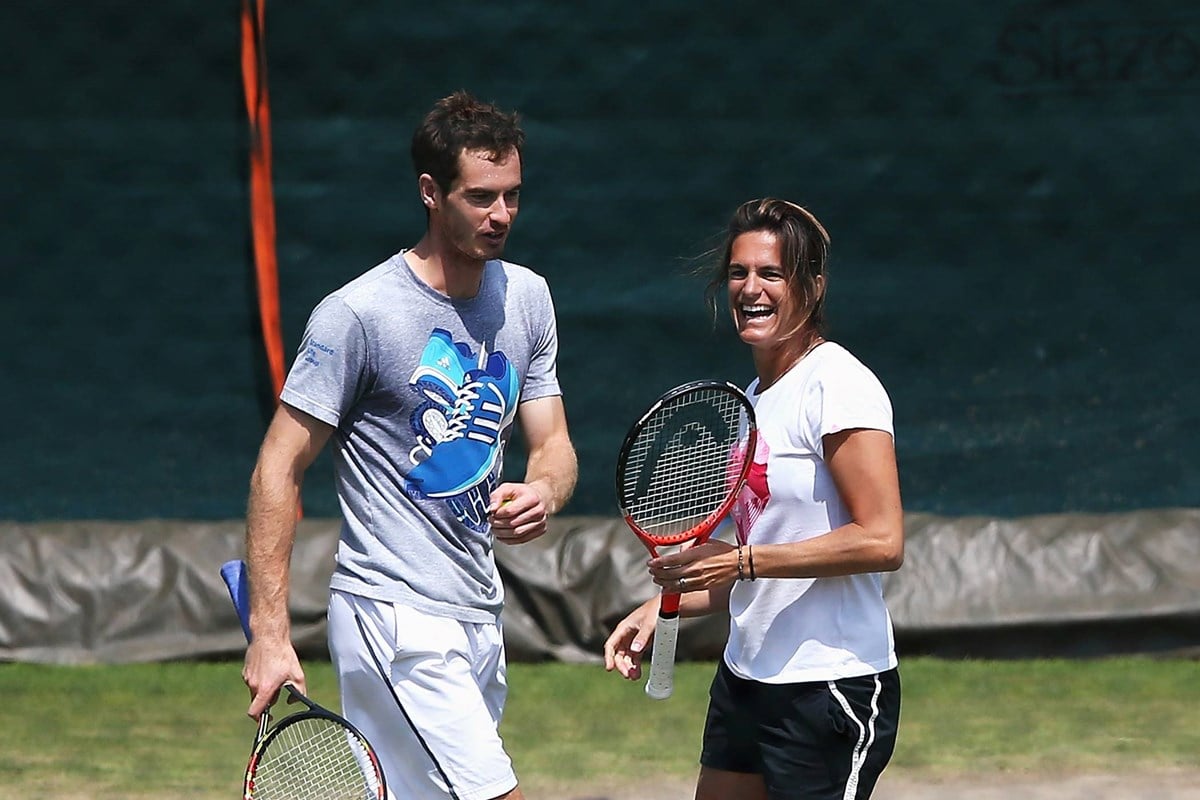
His next appointment would be former WTA world No.1 and two-time Grand Slam champion Amélie Mauresmo, who became only the second woman to coach a top 10 men’s player and the first since the 1990s. Later, he would also add Jonas Björkman to his team as well.
2015 got off to a strong start, as once again Murray fought his way into an eighth Grand Slam and fourth Australian Open final with wins over Grigor Dimitrov, Nick Kyrgios and Berdych. It would however end as another runner-up finish against arch nemesis Djokovic, who captured his eighth major 7-6(5), 6-7(4), 6-3, 6-0.
Safely back inside the world’s top four, Murray broke another record at Indian Wells where a semi-final appearance saw him overtake former Davis Cup teammate Henman as Britain’s record holder for the most ATP Tour wins in the Open Era – surpassing Henman’s 496.
Fully back to the peak of his powers, Murray won his second ATP Masters title in Madrid – his first since it changed to clay – by defeating the king of clay himself, Nadal 6-3, 6-2.
This was his first Masters trophy on clay and set him up for another brilliant run at Roland Garros, making the semi-finals for a third time in his previous four appearances.
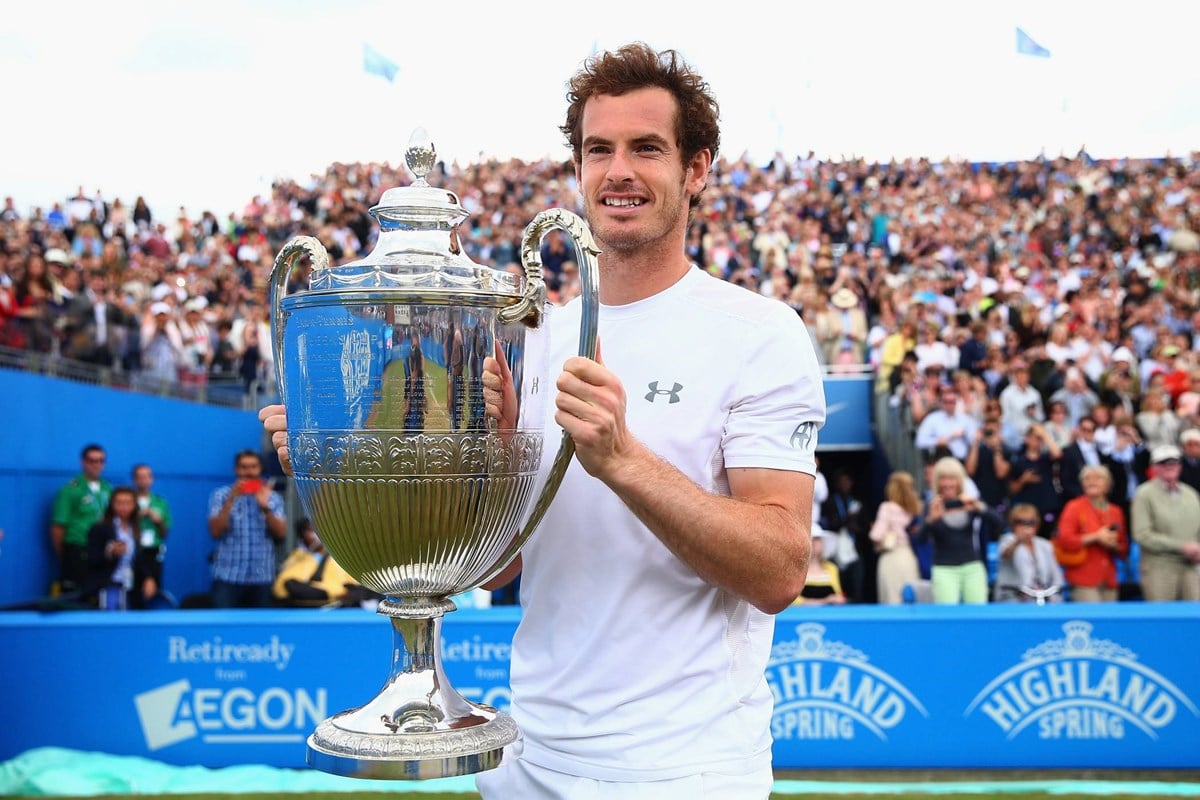
Murray was back for more records on the grass as he tied Hewitt, Roddick, Boris Becker, John McEnroe, Roy Emerson and Major Ritchie as a four-time champion at the Queen’s Club – joint most of all-time. The 28-year-old beat Kevin Anderson 6-3, 6-4 in just over an hour to take the title.
Aiming for his second Wimbledon title, Murray just fell short in the semi-final against Federer in straight sets.
He would go on to win his last tour title of the season at the ATP Masters in Canada with a three-set final win over world No.1 Djokovic. Murray finished the season as No.2 on the ATP rankings.
Throughout the season, Murray had been the leading member in a strong Davis Cup team, vying to make history and become the first British champions since 1936.
At the start of the year, Murray’s wins over Donald Young and John Isner of the USA saw the Brits into the quarter-finals, before he and brother Jamie carried the team to a 3-1 victory over France at the Queen’s Club.
In Great Britain’s first semi-final since 1981, Murray and the team played out a classic in Glasgow against Australia. Murray picked up two crucial singles wins over Thanasi Kokkinakis and Bernard Tomic as well as an epic 4-6, 6-3, 6-4, 6-7(6), 6-4 doubles victory with Jamie up against Hewitt and Sam Groth – it was onto the final…
Facing Belgium away in Ghent, the Brits found themselves 1-0 down after Kyle Edmund lost a five-set clash against David Goffin. Over to Murray, who brought the team back level with a win over Ruben Bemelmans and then partnered Jamie to give GB the lead after the doubles.
With history on the line, Murray stepped up to beat Goffin 6-3, 7-5, 6-3 in the fourth match of the tie and bring the title home for the 10th time in the competition’s history.
That moment helped the Davis Cup team win BBC Sports Personality Team of the Year Award and Andy also winning the individual award for a second time.
Murray finished the event having won all his matches and became only the third player to win all eight of their singles rubbers in the current format. He ended the week with his Davis Cup singles record standing at 25-2.
"It is amazing, as good a feeling as I could imagine,” said Davis Cup Captain Leon Smith. “Andy has shown himself to be an absolute superstar.
"He will be the first to say that it is a team thing but what he has done is astonishing. I am proud of everyone."
2016: Murray’s greatest season
Murray’s 2016 season will go down as one of the single best seasons of all time on the ATP Tour.
Here are just some of the stats:
- Reached world No.1 – the first British singles player to do so in the Open Era
- Nine titles in a calendar year
- 78-9 winning record
- Second Wimbledon title – first Briton to win multiple men’s singles in 80 years
- Only player to win consecutive Olympic singles gold medals
- First Brit to win the ATP Finals
- Unbeaten in his last 26 matches – including five titles
- Won BBC Sports Personality of the Year
First though, let’s go back to the start in January where Murray had another outstanding run Down Under to reach his fifth Australian Open final, but once again finished runner-up to familiar foe Djokovic.
Putting the disappointment behind him, Murray moved on to the clay court season. After a semi-final at the ATP Masters in Monte Carlo and then another runner-up spot in Madrid against Djokovic, Murray exacted his revenge in Rome where he lifted his 12th Masters trophy.
This year saw Murray achieve his best result at Roland Garros as he defeated Isner, Richard Gasquet and Wawrinka to make the final for the first time. Awaiting him for a third final in a row was Djokovic.
For me, he was part of this 'Big Four' era. He was always there fighting with the big three, he was always there.
In a battle between the world No.1 and No.2, Murray made a bright start on the Phillipe Chatrier Court, taking the opening set against the Serbian, but the imperious Djokovic came back to win 3-6, 6-1, 6-2, 6-4 and complete his career Grand Slam.
Roll on the grass court season and it was business as usual for the British star. Having teamed up again with coach Lendl, the reigning Queen’s champion retained his title with arguably one of his best wins at the tournament beating Canadian Milos Raonic 6-7(5), 6-4, 6-3.
This marked his fifth singles title at the Queen’s Club, making him the tournament’s most successful player of all time.
Aiming to replicate his Queen’s, Wimbledon double from 2013, Murray cruised past Liam Broady, Lu Yen-Hsun, John Millman and Kyrgios, before surviving a five-set thriller in the quarter-finals against Jo-Wilfried Tsonga.
The second seed blitzed past Tomas Berdych in the semi-finals, before beating Raonic for the second time in four weeks, 6-4, 7-6(3), 7-6(2) in the final.
Murray became the first British man to win multiple Wimbledon singles titles since Fred Perry in 1935. Murray won Wimbledon twice – in 2013 and 2016.
"I'm proud to have my hands on the trophy again," said the now three-time Grand Slam champion. "This is the most important tournament for me every year. I've had some great moments here, but also some tough losses. The win feels extra special because of the tough losses.”
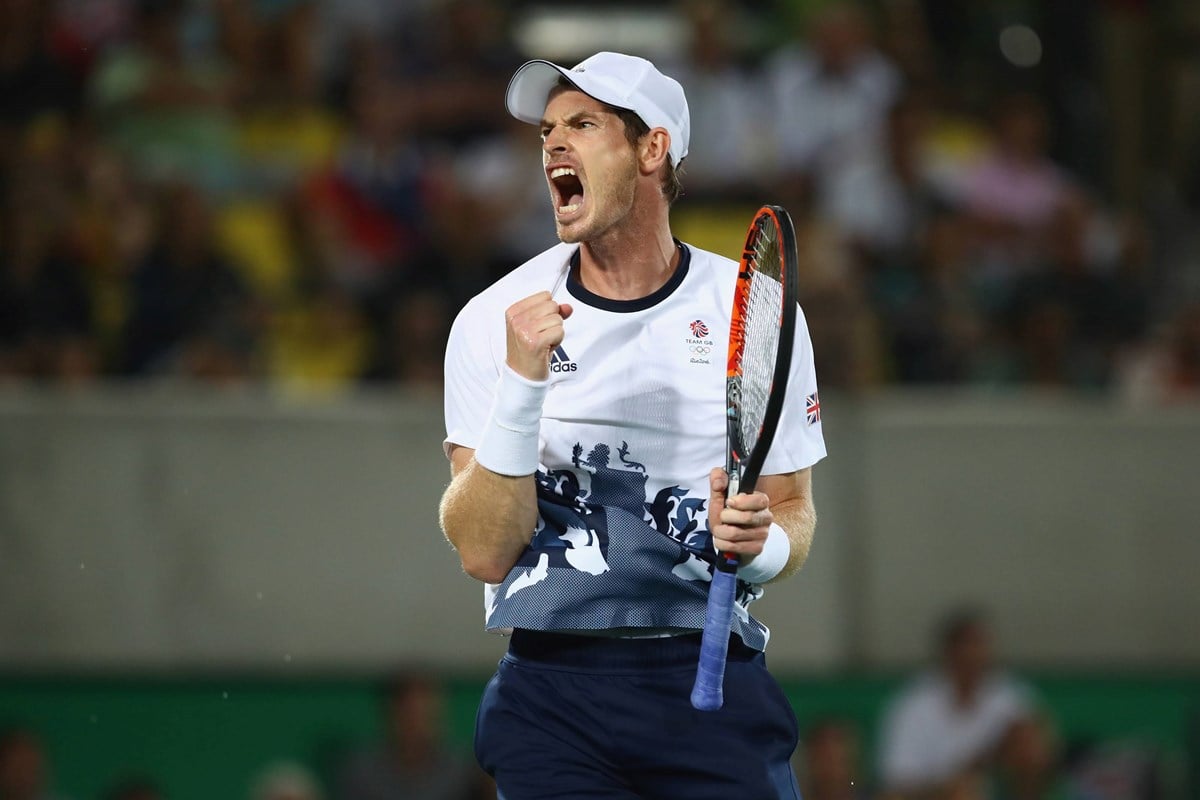
Speaking of defending titles, next up it was the Olympics. With memories of 2012 still fondly in the memory, Murray was aiming to do something no singles player had ever done before – clinch a second consecutive gold medal.
Having breezed past fourth seed Kei Nishikori in the semis 6-1, 6-4, Murray went on to beat Argentina’s Del Potro in the final 7-5, 4-6, 6-2, 7-5 to become the champion at the 2016 Rio Games.
After making the final in Cincinnati and the quarter-final at the US Open, Murray joined up with the British Davis Cup team, who narrowly lost out to Argentina at the semi-finals in Glasgow 3-2.
It was following the Davis Cup that Murray went on a 26-match unbeaten run to finish the season. Two ATP 500 titles in Beijing and Vienna, and two Masters trophies in Shanghai and Paris set him up perfectly for the ATP Finals in London.
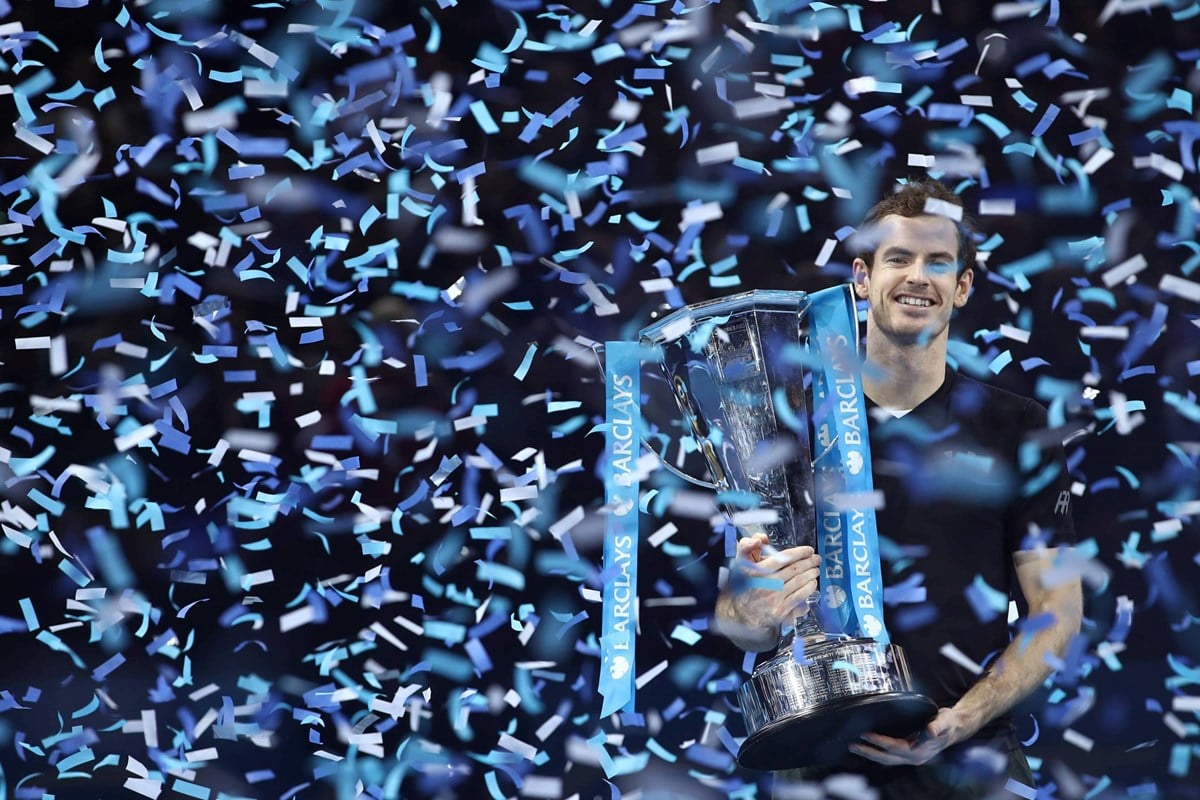
Murray finished the season on a high, becoming the first Briton to lift the year-end finals trophy with victories over Cilic, Nishikori and Wawrinka. In one of the most dramatic finishes to an ATP season in history Murray overcame a three hour and 38 minute semi-final epic to defeat Raonic and against the odds easily defeated Djokovic in straight sets with the year-end No.1 ranking on the line between the two of them.
This meant that Murray would be the first British singles player to finish a year as world No.1 during the Open Era.
He is the only player to win a Grand Slam, ATP Finals and Olympics in a single season and he finished the year as the ITF men’s world champion.
2017-2018: Title in Dubai, another semi-final in Paris & injury battles
Murray’s 2017 season got off to a promising start – finishing runner-up in Doha before winning his only title of the year in Dubai, where he beat Spain’s Verdasco in the final.
After a brief spell out with injury, Murray returned with a good clay court season – making the semi-final in Barcelona as well as another semi-final run at Roland Garros. At the French Open he defeated Del Potro, Karen Khachanov and Nishikori but came unstuck in a five-set thriller against world No.3 Wawrinka.
Concerns grew over a long-term hip injury after the five-time Queen’s champion exited in the first round. He went on to make the quarter-finals at Wimbledon, but this would be the last time he would compete for the remainder of the season.
On 8 January 2018, Murray announced that he had undergone hip surgery with the aim to return to the tour but no guarantee that he would ever be able to play again.
The 30-year-old Brit took to Instagram to inform his fans and the tennis world of his decision, sighting how much the “little kid inside him just wants to play tennis and compete” and how much he missed being out on court.
For months uncertainty loomed over the future of the former world No.1 but in June, Murray made his comeback at Queen’s and Eastbourne before eventually withdrawing from Wimbledon.
His best result of the season came at the Citi Open in Washington, where he showed his quality and resilience to win three three-set matches and reach the quarter-finals.
Results continued to fluctuate, and injuries continued to plague the British star for the remainder of the year, leading to what proved a difficult decision at the start of 2019…
2019: Second hip surgery and title comeback at Queen’s
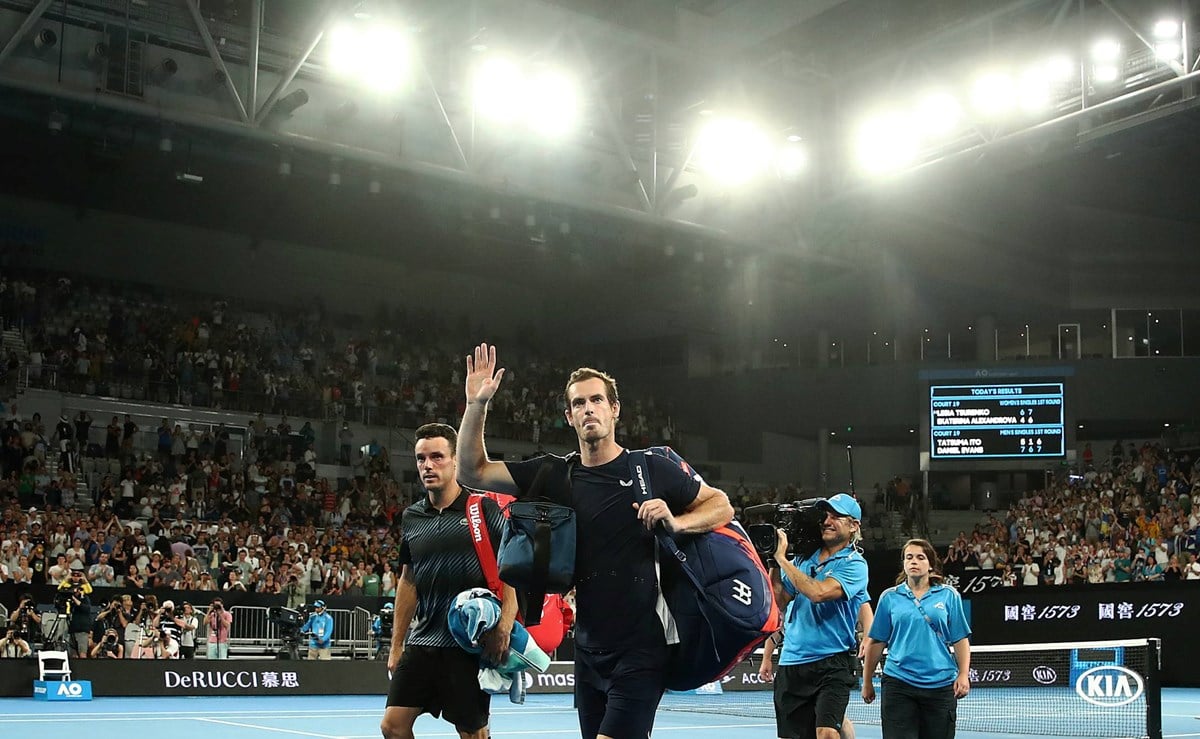
The Australian Open in 2019 appeared to be the final point in the road for Murray. Coming into the tournament, during an emotional press conference, he conceded that he’d done pretty much everything he could to make his hip feel better but that the continued pain was not allowing him to play and compete at the level he wanted to.
“I think there is a chance the Australian Open is my last tournament,” he said. “I’m not sure I can play through the pain for another four or five months.”
Murray played and lost a five-setter against 22nd seed Roberto Bautista Agut in what many believed would be his last match.
During his post-match press conference, Murray spoke of the possibility for a second surgery on his hip and said he’d do everything he could to get back out there competing.
Being the fighter that he is, that’s exactly what the three-time major champion did. Murray underwent a ‘Birmingham hip resurfacing’ treatment, which was developed as an alternative to a full hip replacement but would leave the British star with a metal cap on his hip.
The operation and recovery – which you can re-live and experience with Murray through his Amazon Prime documentary ‘Resurfacing’ – appeared to be a success and there was increasing optimism that he would be able to return to the game once again.
In March, he revealed he was now pain free and targeting a comeback during the summer grass court season, likely starting out on the doubles court.
And so, the then Fever-Tree Championships at Queen’s rolled around again, and Murray announced that he would team up with Spain’s Feliciano Lopez in the men’s doubles draw.
In their opening match, the duo knocked out two-time Grand Slam champions and world No.1s Juan Sebastian Cabal and Robert Farah, before beating Dan Evans and Ken Skupski, as well as Henri Kontinen and John Peers to make the final.
With British excitement sky-high at seeing Murray not only competing but back in a Queen’s final, the five-time singles champion got his fairytale return. Murray and Lopez clinched a 7-6(6), 5-7, 10-5 win against Joe Salisbury and Rajeev Ram to lift the title in Murray’s first tournament back.
“It’s brilliant and I’ve really enjoyed it,” Murray said in his on-court interview. “My hip felt great and there's no pain and obviously I will try to keep progressing from here, but I am just happy to be back out on the grass."
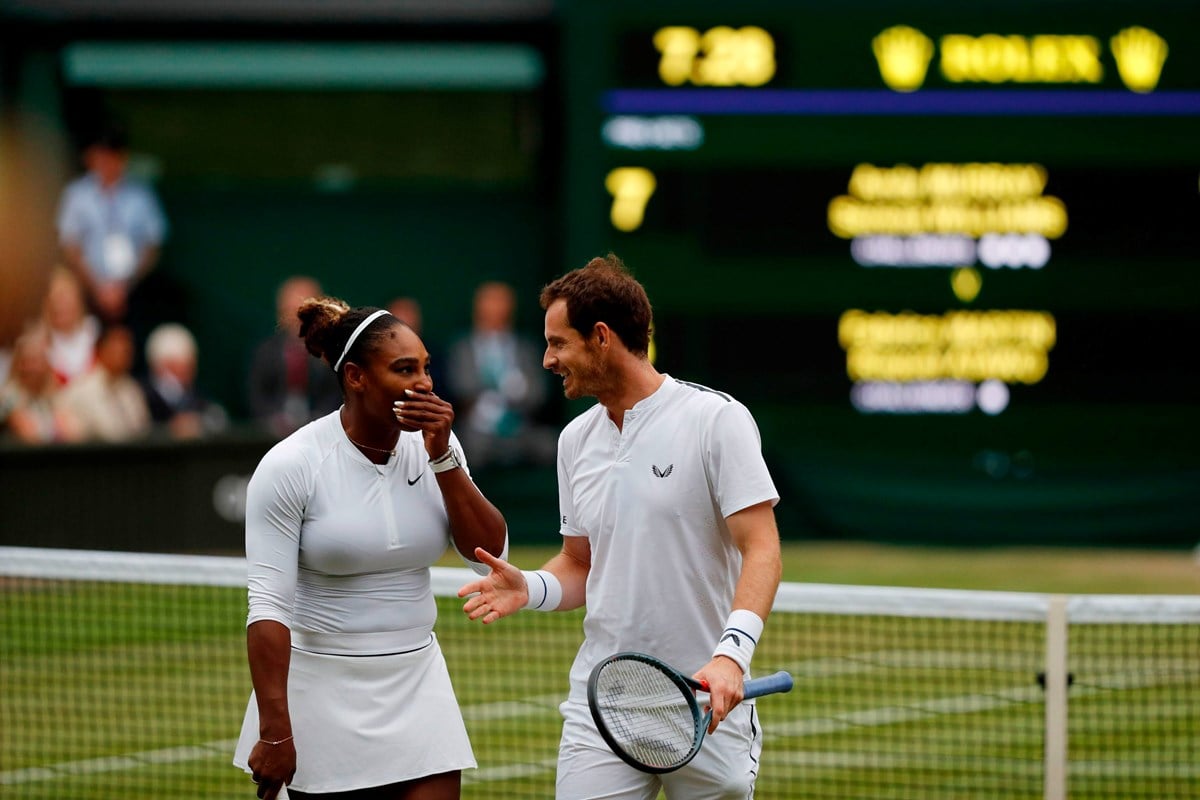
Despite only entering the doubles draws at Wimbledon, Murray was the talk of the town after announcing that he would be partnering with 39-time combined singles and doubles Grand Slam champion, Serena Williams.
Murray and Williams reached the third round before losing out to top seeds Bruno Soares and Nicole Melicha.
He made his singles return in Cincinnati and despite losing in the opening round, this proved the platform for a strong finish to the season.
After a quarter-final in Beijing, Murray did the unthinkable at the ATP 250 in Antwerp.
The 31-year-old beat Marius Copil to reach his first semi-final since injury, before a comeback win over Ugo Humbert saw him make the final.
Facing off against an old rival in Wawrinka in the final of a tour event – just nine months after many thought his career was finished – Murray won 3-6, 6-4, 6-4 to lift his 46th and final career ATP title.
Following his victory, a tearful Murray said: “It means a lot. The last few years have been extremely difficult. I didn’t expect to be in this position at all so I’m very happy.”
Murray was rewarded for his performance with a call-up to the Davis Cup squad, where he won his only rubber against Netherland’s Tallon Griekspoor 6-7(7), 6-4, 7-6(5).
2020-2022: Returning to the top
Murray’s comeback was interrupted during the COVID-19 pandemic, with many tournaments getting cancelled or postponed.
However, he continued to keep fans entertained during this time, winning the Virtual Madrid Masters Esports tournament and doing Instagram Live calls with the likes of world No.1 Djokovic.
Back in tennis action later that year, he got his first top 10 win since 2017 over Alexander Zverev at the Western & Southern Open and made the second round at the US Open having come from two sets down against Yoshihito Nishioka.
After missing the 2021 Australian Open with COVID, this would be the first full season Murray had played since 2016.
This year he finished runner-up at the ATP Challenger in Biella, reached two ATP quarter-finals in Metz and Stockholm as well as a third round appearance at Wimbledon and Indian Wells. In the opening round at the US Open he also took world No.3 Stefanos Tsitsipas to five sets.
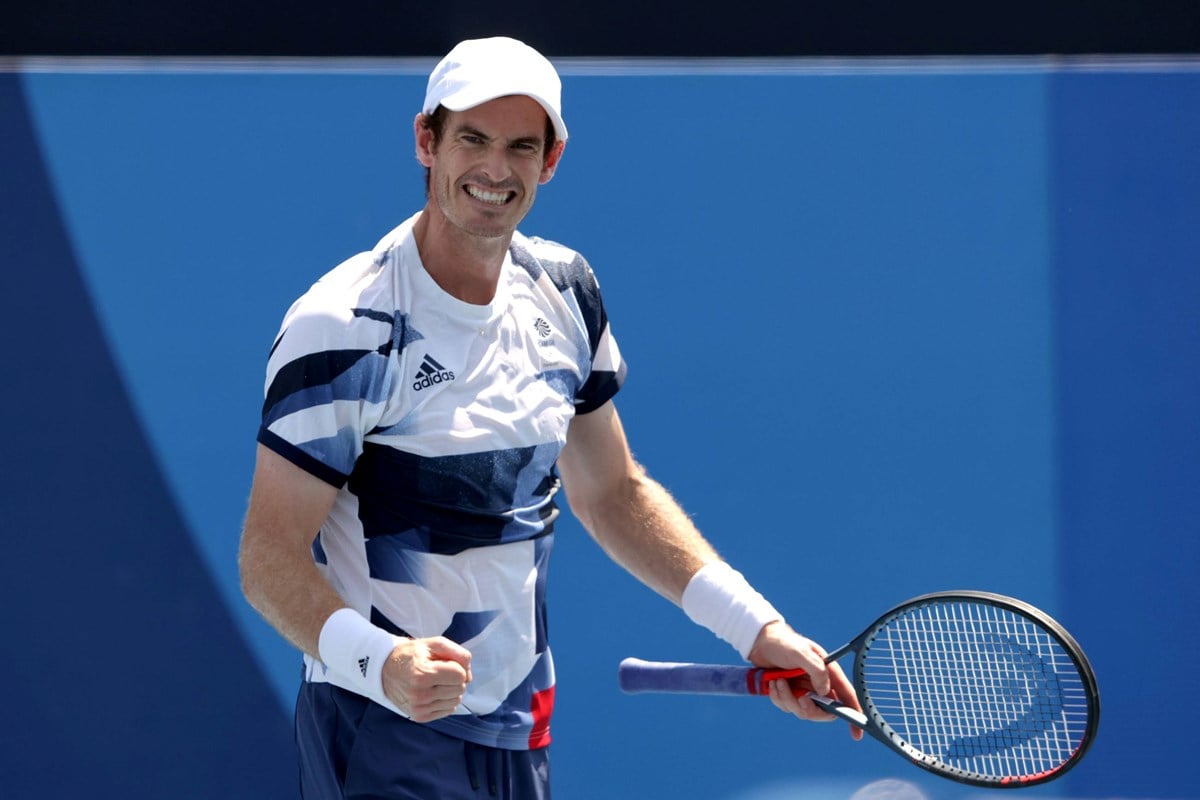
Murray was also picked for Team GB at the Tokyo Olympic Games, where he competed in the doubles alongside Salisbury. The British duo reached the quarter-finals before losing to Croatia’s Čilić and Ivan Dodig.
2022 saw Murray force his way back up the ATP rankings to a peak of world No.43 – his first time back in the top 50 since 2018.
He's a legend. His legacy in tennis and in sport is going to be forever.
He started the year by making his first final since 2019 in Sydney, eventually finishing as runner-up to Aslan Karatsev – but it was a sign of good things to come.
He made the second round at the Australian Open with yet another five-set victory, this time over Nikoloz Basilashvili.
At Indian Wells he became the 18th man in the Open Era to reach 700 career wins and later reached the third round in Madrid and semi-final of the Surbiton Trophy.
Playing in Stuttgart ahead of Wimbledon, Murray reached another ATP final with impressive victories over Tsitispas and Kyrgios but came runner-up to cinch Championships winner and Wimbledon runner-up Matteo Berrettini.
Quarter-final in Newport and a third round at the US Open saw Murray selected for the Davis Cup squad competing in the Finals Group Stage in Glasgow, before also representing Team Europe at the Laver Cup. It was here that long-term rival Federer retired from the game.
2023-2024: Grass court success and retiring on a high

Since his return from two hip surgeries, Murray has been synonymous with five-set thrillers at Grand Slams, with the 2023 Australian Open proving the best of the bunch.
In the opening round, he knocked out 13th seed Berrettini in a final set tie-break to book a second round clash with home favourite Kokkinakis.
In what would prove to be the longest match of his career at five hours and 45 minutes, Murray came back from two sets down to win 4-6, 6-7(4), 7-6(5), 6-3, 7-5.
Having bowed out in the third round to 24th seed Roberto Bautista Agut, Murray headed to Doha, where he made his 71st and final ATP Tour final. The British star would once again come runner-up, this time to Daniil Medvedev 6-4, 6-4.
After a third round loss to fellow Brit Jack Draper, Murray would eventually turn his attention to the ATP Challenger Tour in a bid to get more matches under his belt.
This began a run of three titles from four Challenger tournaments in Aix-en-Provence, Surbiton and Nottingham.
The Lexus Surbiton Trophy got his grass court season off to a winning start as he lifted the title for the first time with an impressive 6-3, 6-2 win over Jurij Rodionov in the final.
Onto the Rothesay Nottingham Open next, where Murray extended his winning streak to 10 matches. Murray didn’t drop a set throughout the week and closed out the title against Arthur Cazaux 6-4, 6-4.
He became only the third player since 2000 to win consecutive ATP Challenger grass court titles after fellow Brit Evans in 2019 (Surbiton & Nottingham) and Yen-hsun Lu in 2016 (Surbiton & Ilkley).
Best of all, Murray was surprised by his whole family watching on from the stands.
“Oh my god, I didn’t know they were here!" Murray said in shock. "I had no idea they were coming. My family have been unbelievably supportive and have continued to be throughout my career. I really appreciate them supporting me and telling me to keep going."
At Wimbledon, Murray was on the wrong side of another five-setter against Tsitsipas 7-6(3), 6-7(2), 4-6, 7-6(3), 6-4 and also went out in the second round at the US Open.
Murray would represent Great Britain for the final time at the Davis Cup Finals Group Stage in Manchester. His victory against Switzerland’s Leandro Reidi helped the Brits secure qualification into the Final 8 in Malaga.
He would finish his career in the Davis Cup with an impressive 42-10 winning record and the third most wins of any British player in the competition.
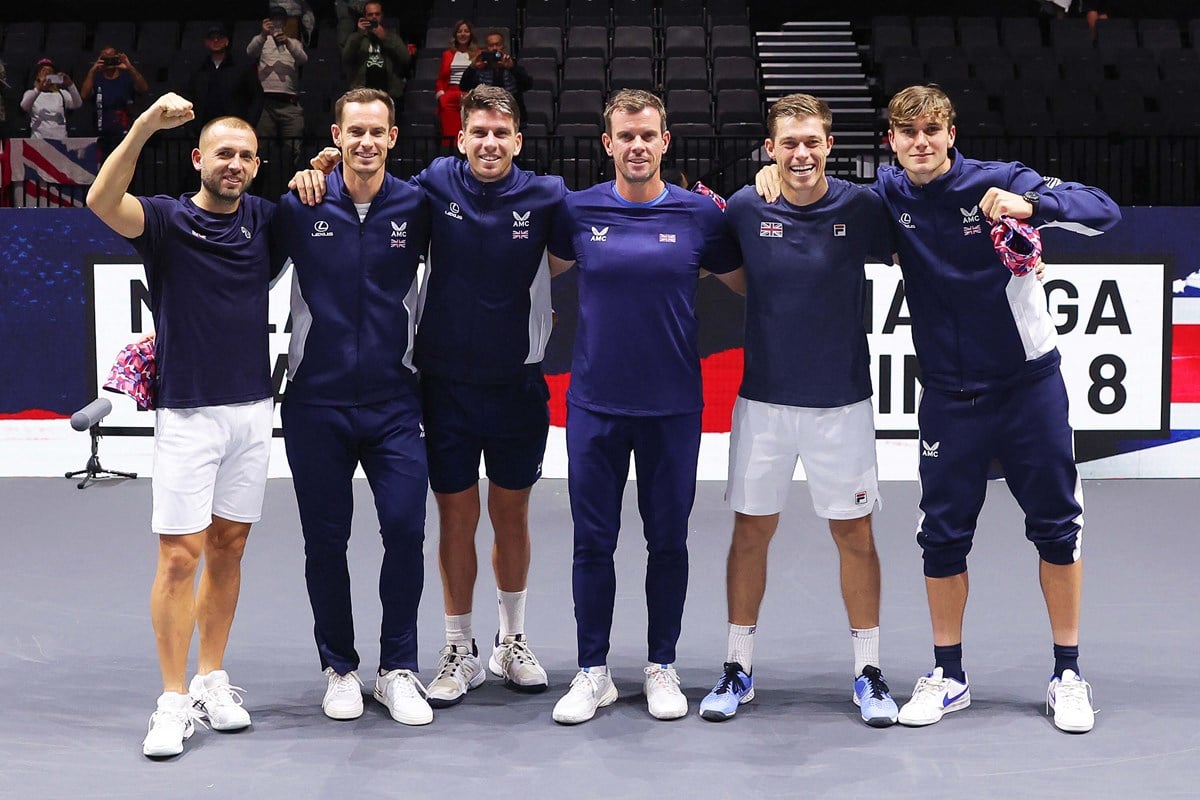
It was a difficult start to the 2024 season for Murray – whose best performance came was a third round at the ATP 1000 Miami Open, following on from second rounds in Doha, Dubai and Indian Wells.
It was after Miami that Murray suffered an ankle injury that would put him in doubt for Roland Garros – but in true Murray fashion, he found a way to make it back in time for what would be his final French Open appearance against long-time rival Wawrinka.
The two-time Wimbledon champion then found himself back on his favourite surface – the grass.
Competing at the cinch Championships, Murray set fans alight with a 6-3, 3-6, 6-3 win over Australia’s Alexei Popyrin, but a injury to his back meant the six-time singles and doubles champion would have to retire in the second round.
Leaving the court waving to the crowd in sunny West London, little did he know that would be his final singles match of his career.
Murray worked hard to get back in shape for what he claimed would be his final showing at Wimbledon. While he wouldn’t be able to compete in the singles, Murray was able to join up with brother Jamie to compete in the men’s doubles for the first time.
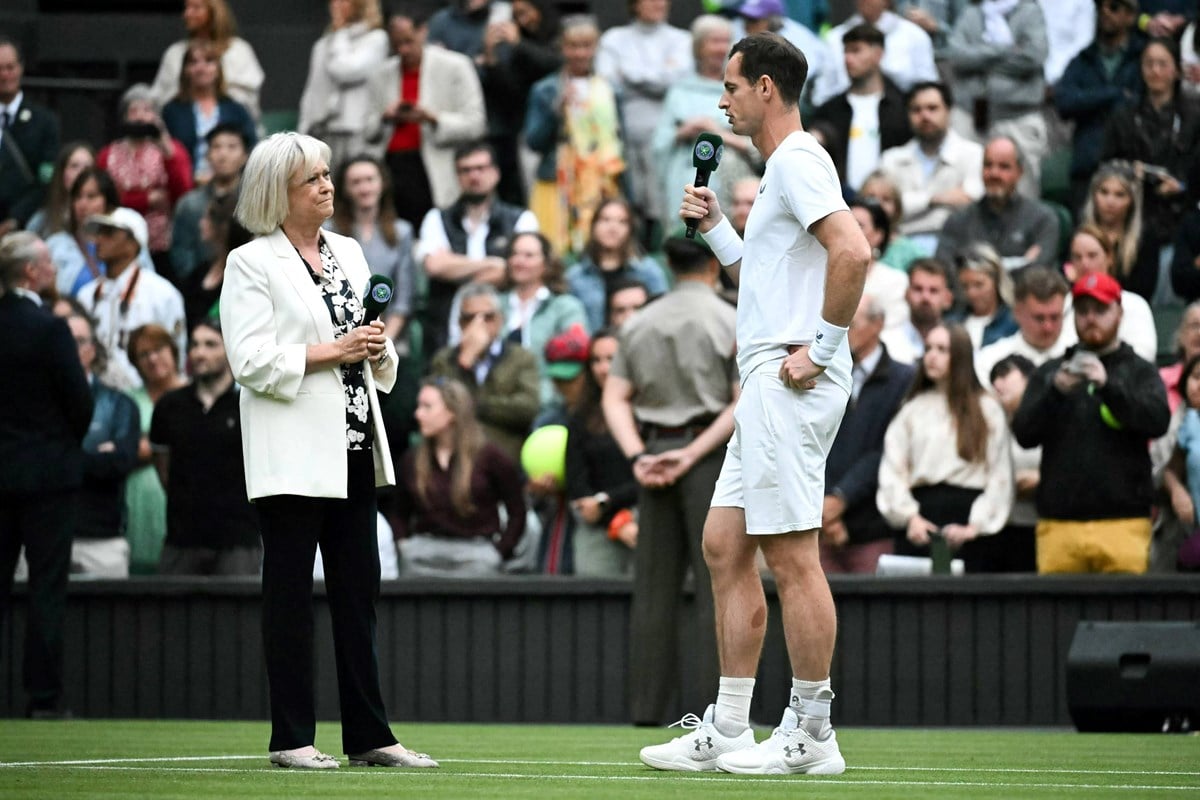
The Murray brothers were defeated in the opening round against John Peers and Rinky Hijikata 7-6(6), 6-4 to bring his Wimbledon career to a close.
Murray was given a fitting tribute on Centre Court presented by Sue Barker and surrounded by many greats of the game, including Djokovic, Martina Navratilova and John McEnroe.
In the weeks that followed, he made an official announcement that the Olympics would be his last event before retirement as he teamed up with Evans for a shot at a fourth career medal.
Murray and Evans won their opening two matches for Team GB having saved multiple match points in two match tie-breaks, but in the quarter-final they eventually bowed out to American duo Taylor Fritz and Tommy Paul - bringing an end to the Briton's career.
Andy Murray FAQs
Murray won 46 singles titles, including three Grand Slams (US Open and Wimbledon twice), 14 Masters 1000 series, two Olympic Gold Medals, and a title at the ATP Finals.
Andy Murray won his first senior Grand Slam title at the 2012 US Open, defeating Novak Djokovic in five sets.
He beat world No.1 Novak Djokovic 7–6(10), 7–5, 2–6, 3–6, 6–2 on 10 September 2012 to win the US Open.
Andy Murray won Wimbledon twice, defeating Novak Djokovic in the final in 2013, and Milos Raonic in 2016.
Yes. Andy Murray officially retired from professional tennis in August 2024, following his final Olympic appearance in Paris.
His final professional matches were at the 2024 Olympic Games in Paris, where he played men’s doubles with Dan Evans.





